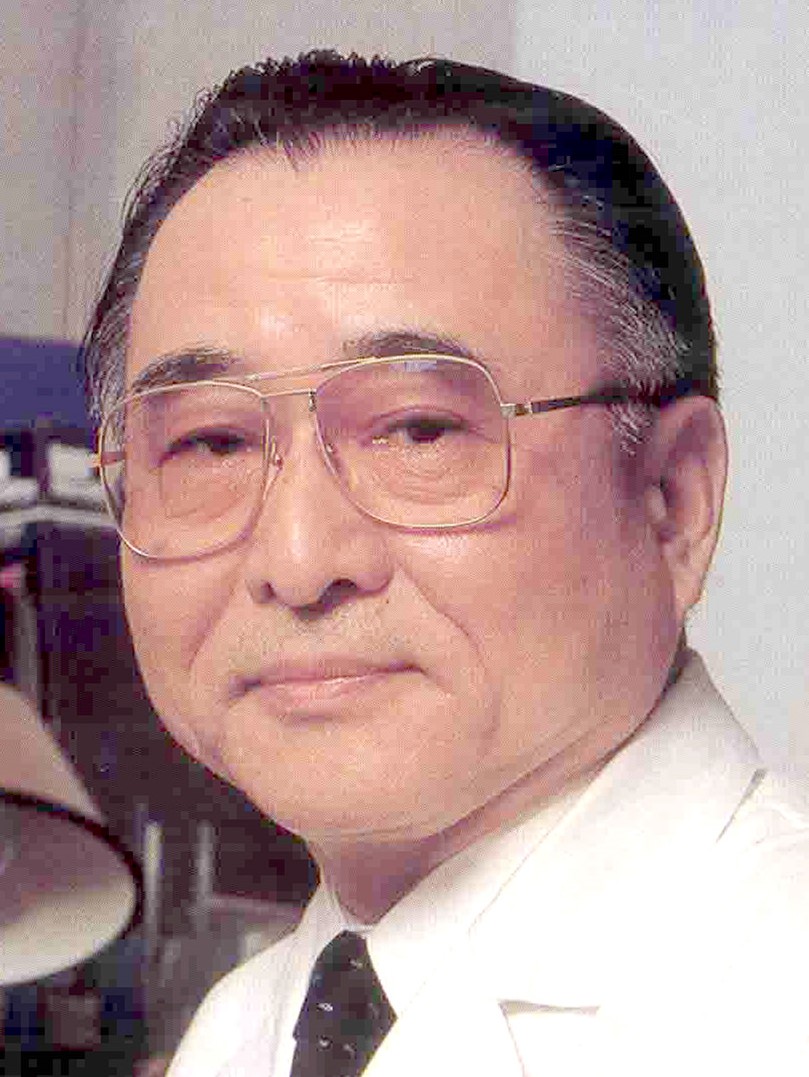- Home
- About Us
- Newsletters
- Meetings
- Membership
- Journal
- Scientific Interest Groups
- Helpful Links
In Memoriam: Fumio Gotoh, M.D., Ph.D. (1926-2019)by Norihiro Suzuki, MD, PhD, FACP, FWSO
 Fumio Gotoh was born in 1926 in Tokyo and graduated from Keio University School of Medicine in Tokyo as valedictorian in 1951. He was trained in internal medicine as well as in neurology and started to perform research on cerebral circulation and metabolism in the laboratory of Professor Toyozo Aizawa at Keio University in 1955. He undertook the measurement of human cerebral blood flow (CBF) by N2O inhalation method which was developed by S.S. Kety and C.F. Schmidt in 1948. He introduced accurate statistical methods into analysis of data of change in CBF. His interest was not confined in blood flow, but also in the cerebral metabolism. For the analysis of the cerebral metabolism, Gotoh started to analyze animal brain metabolism utilizing the Warburg method. He also manufactured original PO2 and PCO2 glass electrodes and succeeded to measure the change in oxygen and carbon dioxide continuously in animal brain. In 1959, he went to work for Professor John Stirling Meyer at Wayne State University, Unit of Cerebrovascular Disease in Detroit. He had undergone numerous works utilizing the original method for continuous measurement of PO2, PCO2, pH, Na, K in arterial blood in the cubital artery and internal carotid artery. He presented numerous novel pathophysiological findings in the brain function. For example, “the brain falls into hypoxia during hyperventilation”, this response of cerebral blood vessels is the common concept in nowadays, however, it was an unexpected phenomenon at that time. Notably, he learned and engaged in the clinical neurology as well as basic research there. He accomplished to acquire “Derek Denny-Brown style” British neurology. Fumio Gotoh was born in 1926 in Tokyo and graduated from Keio University School of Medicine in Tokyo as valedictorian in 1951. He was trained in internal medicine as well as in neurology and started to perform research on cerebral circulation and metabolism in the laboratory of Professor Toyozo Aizawa at Keio University in 1955. He undertook the measurement of human cerebral blood flow (CBF) by N2O inhalation method which was developed by S.S. Kety and C.F. Schmidt in 1948. He introduced accurate statistical methods into analysis of data of change in CBF. His interest was not confined in blood flow, but also in the cerebral metabolism. For the analysis of the cerebral metabolism, Gotoh started to analyze animal brain metabolism utilizing the Warburg method. He also manufactured original PO2 and PCO2 glass electrodes and succeeded to measure the change in oxygen and carbon dioxide continuously in animal brain. In 1959, he went to work for Professor John Stirling Meyer at Wayne State University, Unit of Cerebrovascular Disease in Detroit. He had undergone numerous works utilizing the original method for continuous measurement of PO2, PCO2, pH, Na, K in arterial blood in the cubital artery and internal carotid artery. He presented numerous novel pathophysiological findings in the brain function. For example, “the brain falls into hypoxia during hyperventilation”, this response of cerebral blood vessels is the common concept in nowadays, however, it was an unexpected phenomenon at that time. Notably, he learned and engaged in the clinical neurology as well as basic research there. He accomplished to acquire “Derek Denny-Brown style” British neurology.Despite kind and eager offer from NIH, he returned to Keio University in 1966. He established Department of Neurology in Keio University Hospital in 1970, then became Professor in 1972, organizing his own research laboratory, starting to educate students and post graduate students, taking care a lot of patients with neurological diseases, particularly with stroke, in the hospital, and to continue research on CBF and metabolism. This became his life work. Gotoh launched a research with a majestic theme, the mechanism of autoregulation of the brain blood flow. Shy-Drager syndrome (nowadays referred as multiple system atrophy (MSA-P)) with severe orthostatic hypotension revealing frequent syncope was a trigger of this theme. His hypothesis was the autonomic nervous system, particularly the sympathetic nerve might play crucial role to keep CBF constant despite dynamic change of brain perfusion pressure i.e. systemic blood pressure1. In order to elucidate the relevance between autonomic reaction of cerebral vessels and the sympathetic system, he originated several approaches and techniques. He developed a quantitative analysis system of sympathetic nerve terminals in the feline cerebral vessels, an in situ action-potential recording system from the feline pial arteries, a continuous recording system of changes in diameter of feline pial arteries, and an in situ endothelial damage model of cerebral circulation, etc. Consequently, he established “dual control theory of regulation of CBF”2. Gotoh's research activities covered a wide range in the pathophysiology of cerebral circulation and metabolism3. He was appointed the president of the International Stroke Society (currently World Stroke Organization). He served several international meetings, such as the 9th International Congress of Cerebral Blood Flow and Metabolism, Tokyo, 1979, and the 18th Salzburg Conference, Nikko (Japan), 1995 and the 1st International Stroke Scale Workshop, Tokyo, 2000). He received many awards including the Kitasato award (1969), the Mihara Award (1983), the Keio Award (1986) and the Lifetime Achievement Award from the International Society of Cerebral Blood Flow and Metabolism (2001). His international activities are reflected in his list of publications, which contains over 200 peer-review articles. Gotoh enjoyed discussing neurogenic control of cerebral circulation with researchers all over the world. Although his precise criticism or comments is very severe for all researchers, he always directed the way to proceed for them. He also enjoyed collecting antique cameras and taking photographs which might be reflect on his research – detailed imaging analysis, and computer programming which reflect statistics for the data from experiments. The method of the conjoint analysis was one of his favorite one for analysis for complicate and multifactorial objects, which reflect on his unique quantifiable, evidence-based Stroke Severity Scale. With Gotoh’s death, not only Japanese neuroscientists but also many researchers in the field of cerebral circulation in the world have lost one of their most prominent leaders. He was an enthusiastic scientist and an outstanding mentor who was willing to offer his constructive criticism and to elaborate on his insightful ideas to everybody. His death has left an aching void in our hearts; however, his ideas, thoughts and enthusiasm, will forever remain alive in subsequent generations of scientists. References |
